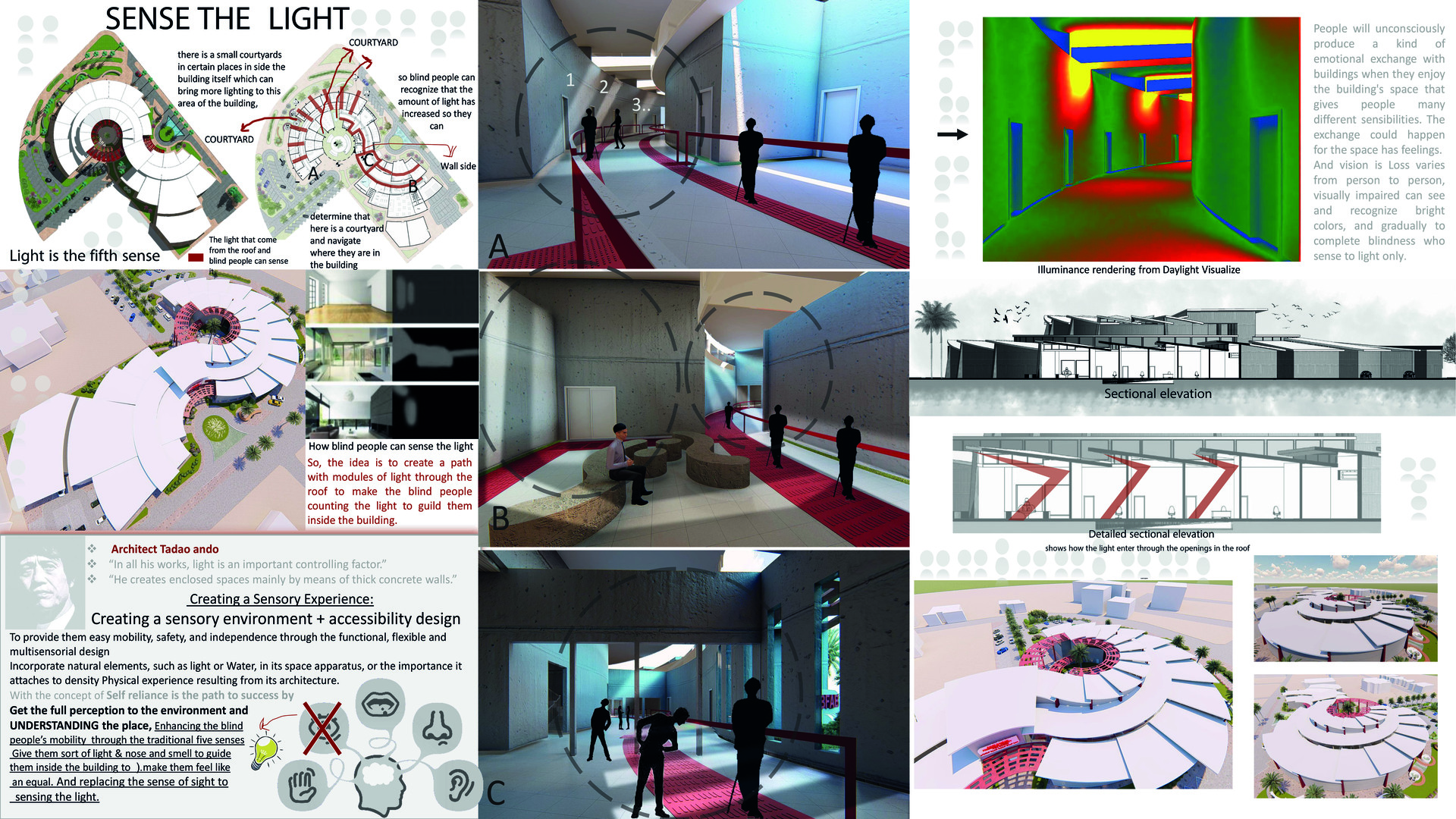Project Description
First of all, what is this center? The center can be defined as a social place where blind and visually impaired people can spend time to entertain themselves, develop and refine their educational skills and do many activities and arts that they cannot perform outside of this building specially for them because of the lack of capabilities, needs, services and special care that are not available to them. The center aimed to serves this category in the first place and be provided with all the needs and services and a dedicated staff working to take care of them psychologically and morally for their development through activities that bring them under one roof. So, this project is a real proposal for an extension and renovation for an exist blind society in my country, which is supports its Vision to educate and empower blind and visual impaired people by providing a safe recourse of support and educate them to live independently, where they can attend educational, entertainment workshops, gather and spend some time there, doing some activates together and the most important thig is engage them with the society and make them productive, especially The building will contain a combination between the functional requirements, durable construction, which is applied to the ministry. Then, in determining architectural theories to be achieved, must first ask the question: for who is the building (users) and what is the building's goal? When these factors are under consecration it is evident that the theories to be achieved, evaluated and interpreted must relate to the needs of the building users. “The Eye of the Skin”, a book by Pallasma, he stated, “Architecture has contained the intellect and the eye but left the body and other senses without consideration, as well as our memories, imagination, expressions, dreams homeless. it is clear to see that our modern world, or at least, our part of the world, is not fully equipped to someone who has lost his/her sight. If architects don’t consider this a big issue, then that alone is a huge issue. Architects must design buildings that are felt and not just seen and looked at their aesthetics And vision is Loss varies from person to person, visually impaired can see and recognize bright colors, and gradually to complete blindness who sense to light only. So, the idea is to create a main path and spine which is connect the whole building together, and then main factor that would play a main role is the roof which will bring the light with modules and sequence through the widows to make the blind people counting the light that they feel to guild them inside the building, and guide them where to go, another thing is: there is a small courtyards in certain places in side the building itself which can bring more lighting to this area of the building, so blind people can recognize that the amount of light has increased so they can determine that here is a courtyard and navigate where they are in the building and decide where to go, them when the modules of lights end, the light will come as continues line with will fall on the wall and let the blind people follow it while they are handling the wall side. Every thing is shown in the plan with red color. v CHOSEN Architect Tadao ando v “In all his works, light is an important controlling factor.” v “He creates enclosed spaces mainly by means of thick concrete walls. v In all his works, light is an important controlling factor.” To provide them easy mobility, safety, and independence through the functional, flexible and multisensorial design Incorporate natural elements, such as light or Water, in its space apparatus, or the importance it attaches to density Physical experience resulting from its architecture. With the concept of Self reliance is the path to success by Get the full perception to the environment and UNDERSTANDING the place, Enhancing the blind people’s mobility through the traditional five senses Give them sort of light & nose and smell to guide them inside the building to .( make them feel like an equal. And replacing the sense of sight to sensing the light.
